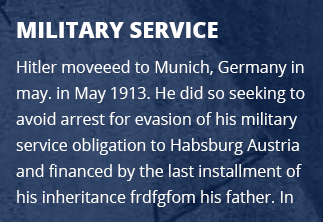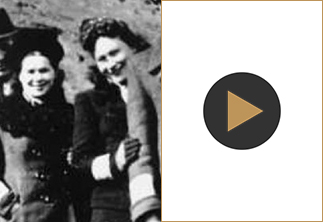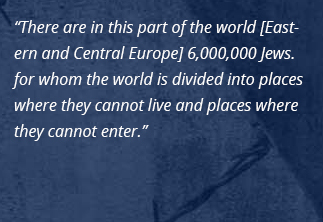HIDDEN CHILDREN: DAILY LIFE
The ruthlessness of Nazi rule and the barbarities of war forced some children to mature beyond their years. One child survivor described them as “old people with children’s faces, without a trace of joy, happiness, or childish innocence.” Adapting to their abnormal circumstances, Jewish boys and girls in hiding improvised games, took advantage of the scant educational opportunities available, and eked out a precarious existence through their own labor.
The daily experiences of hidden children varied, depending upon whether they could live openly and perhaps attend school and socialize with others their age, or had to be physically concealed. For those who were not permitted to journey outside, life in hiding was often filled with pain, torment, and boredom. Reading, playing, and creative expression could help to fill seemingly endless hours and temporarily divert the child’s attention from his or her desperate situation.
Toys and Play
Play is an essential part of a child’s life experience, fostering creativity, social interaction, and mental development. Even in the ghettos and concentration camps, Jewish children sought solace in games. For hidden children who often had few personal belongings, toys took on special meaning. They could help forge a bond between the children and rescuers or reaffirm a tie to their missing parents or family. Just as importantly, playthings and games helped to restore some semblance of normal childhood to youngsters living under abnormal circumstances.
Education
Since ancient times, education has been an important element of Jewish culture. As Germany took control of Europe, however, opportunities for Jews to attend schools and universities were initially limited severely and eventually eliminated entirely.
For “Aryan”-looking school-age children in hiding, the routines of going to class and studying helped to restore some sense of normality in their lives, and perhaps their new-made friends gave them much needed solace. Children who were physically concealed had few opportunities for formal study, but when possible, they too tried to educate themselves through reading and writing.
Work
Jewish hidden children frequently shared in their foster families’ household chores and work responsibilities. In rural areas, they often tended animals and helped with planting and harvesting crops. In urban settings, Jewish children worked in factories or sold foodstuffs or other items on the open and black markets. In some cases, older youths fled to the forests to eke out an existence or to join the partisans in combating the Nazis.
Clothing
As Jews were forced to move into ghettos or were deported to concentration camps, the Nazis deprived them of most of their possessions by drastically limiting the amount of moveable property that they could take. Once the Jews were moved, the Nazis then restricted the flow of goods to them.
Children who went into hiding had to move quickly and inconspicuously and as a consequence, were forced to leave behind even the few possessions they owned. Most took little more than the clothes on their backs. Due to wartime shortages, obtaining new clothing was generally difficult, so rescuers made children’s clothing from scraps or dressed the youngsters in hand-me-down garments.




